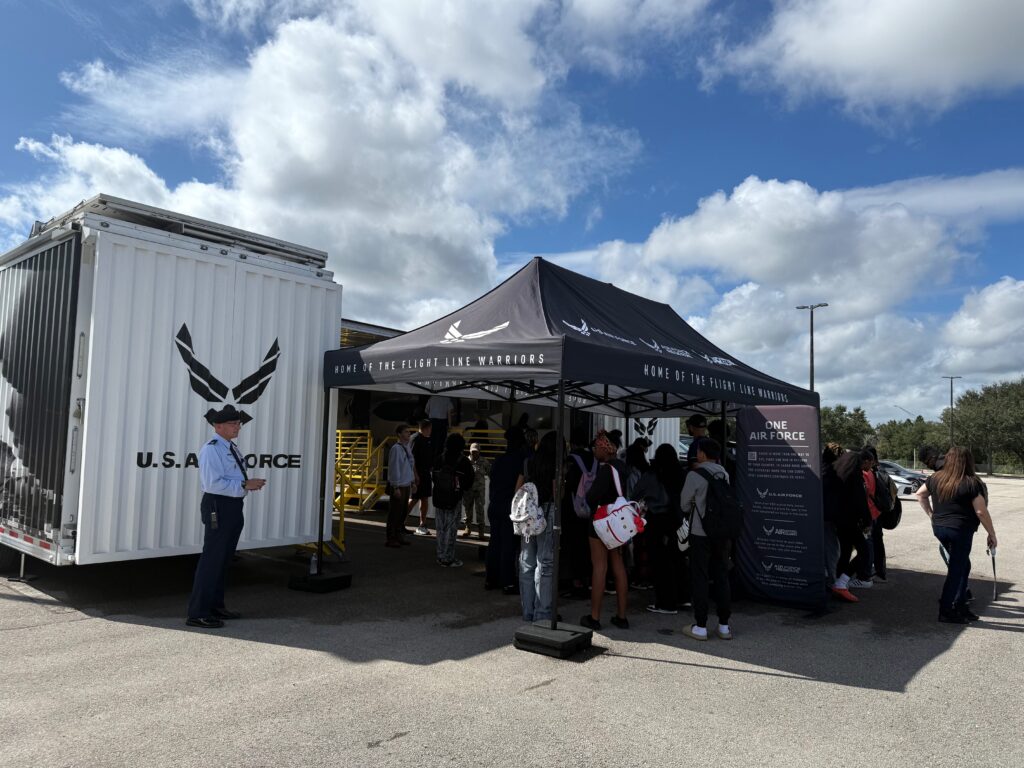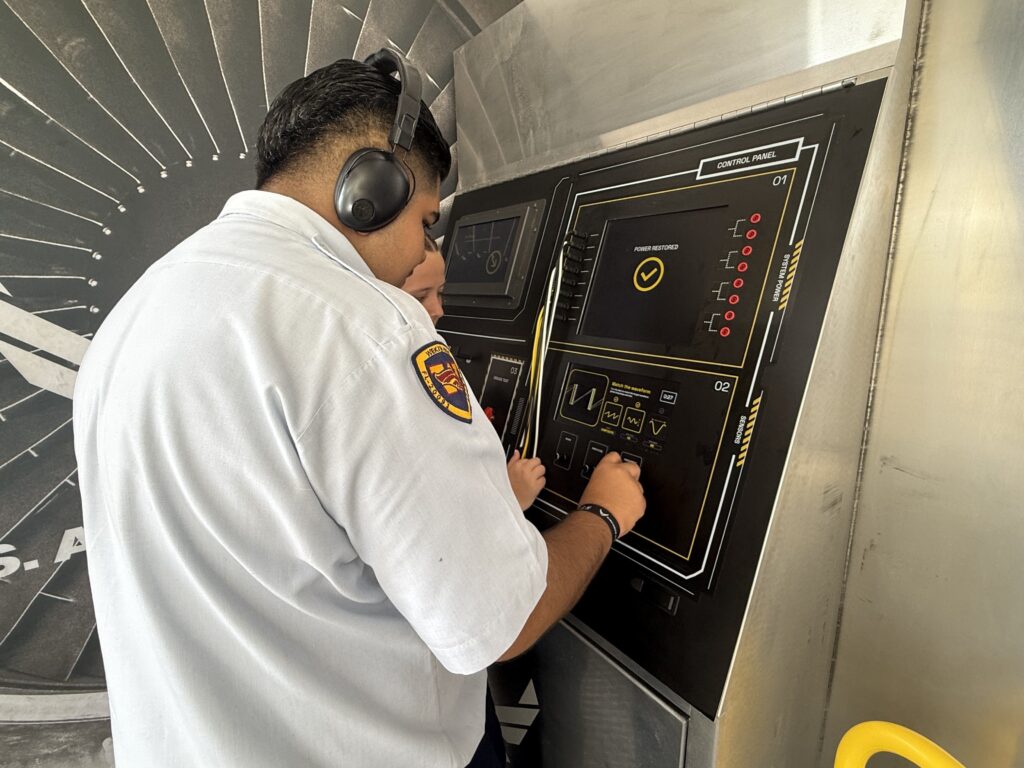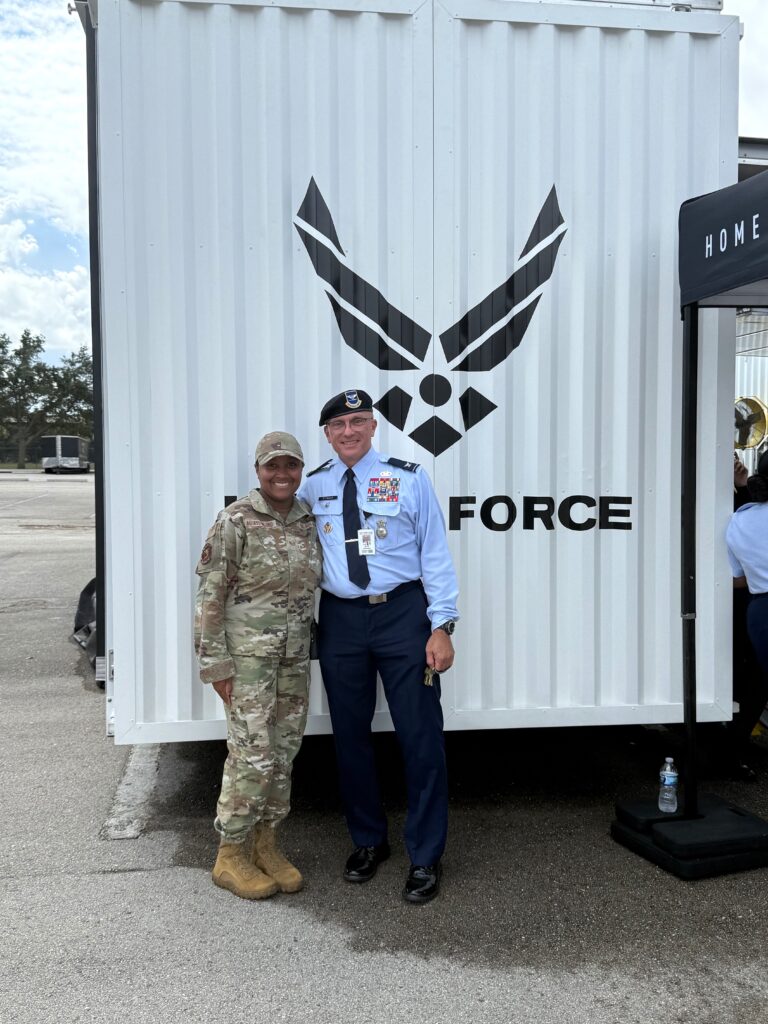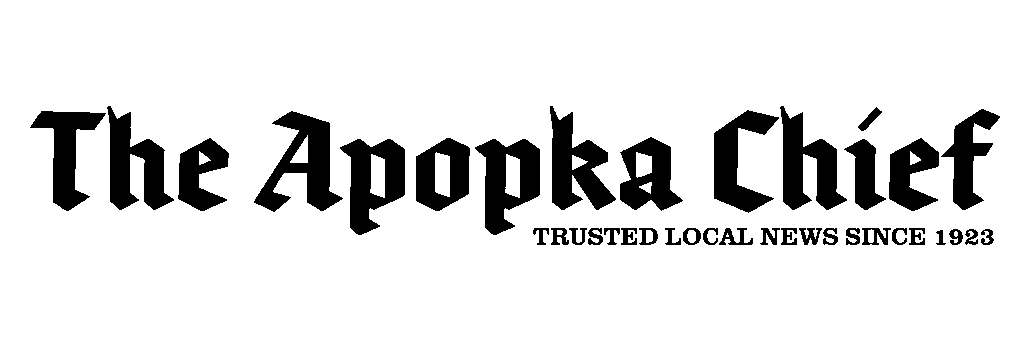
Sarah Merly
Key Points
The United States Air Force brought a four-part simulator to Wekiva High School to recruit students Monday.
“Any industry you’ve got in public, you’ve got in the services,” said Michael Armbruster, Orange County Public Schools deputy superintendent and son of an Air Force veteran. “So I think it’s a great opportunity, and this is exposing the kids to something they’re not going to see most of the time anyway.”
The simulator was split between two shipping containers in the parking lot adjacent to the Wekiva football stadium, with each container offering two immersive experiences. The first two parts gave students the opportunity to rewire landing gear and test an F-35 engine. Students would wear a set of headphones and follow both onscreen and verbal instructions as they learned more about the role of maintainer.
The third simulation invited students to become boom operators who refuel planes in the air. Students then completed the final simulation at a different VR station, which challenged students to fly through glowing rings and aim at targets as they soared through canyons.

Wekiva High School JROTC instructor Scott Stewart, who served in the Air Force for over 30 years, said his goal in bringing the simulator was to show students how much more the Air Force has to offer beyond piloting.
“A lot of people think the ASVAB (Armed Services Vocational Aptitude Battery) is a pass/fail, but it’s not,” Stewart said. “…If you score really high, we can get up—there’s like 186 jobs in the Air Force — you can open up all 186. If you score low, you may get only 20 jobs. It’s an accordion based on your scores.”
Stewart also added that pilots are more dependent than those outside the military may realize, relying on other people to add air to tires, create IDs and more.
“If one of the slices [is] missing, the chance of that aircraft taking off safely or landing safely becomes questionable,” Stewart said. “It’s one big puzzle pulled together.”
Stewart worked with Air Force recruiter Aguayo Milord, who oversees high schools in the north Orlando area, to bring the simulator to Wekiva High School. Milord said this was the first time this year she was able to bring the unit to a local high school.

“I always wanted to be in the Air Force since high school,” Milord said. “I was just scared because I didn’t have support. Nobody really thought I [could] do it because I wasn’t physically fit — but I still did it.”
Milord said she joined the Air Force for financial stability and higher education opportunities, with recruiting as her ultimate goal. She was selected as a recruiter while she was serving in South Korea, and she has no intention of leaving that role when her tour ends in 2028.
“I have a student from one of my schools — he lost his parents,” Milord said. “I remember he thought he couldn’t do it, and the way I motivated him was through my story.”
Milord said the student has now passed the ASVAB.
“I just like seeing people…that don’t come from a lot of money succeed,” Milord said.
Stewart suggested that the military is usually the most rewarding option for those unable or uninterested in attaining a college degree.
“Do I stand in line for the next job at Walmart?” Stewart said, referring to the choice graduated high school students face. “I guess. Or do I join the military, learn a skill, get a paycheck, get a roof over my head? I get insurance. I can feed my belly. I get $2,000 a month at the same time.”
Stewart and Milord are currently working on a plan to bring the simulator back in March for two days.
“I came from a poor family,” Stewart said. “I don’t want to see these kids go through what I had to go through. Why not open up a door?”

